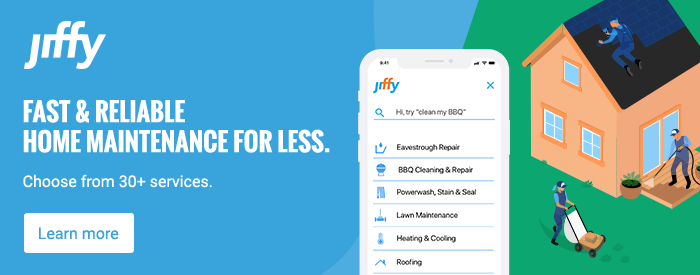Jiffy is a platform that instantly connects homeowners with nearby, quality home maintenance and repair professionals in over 30 categories. Welcome to our blog, where we share home maintenance tips, inspirational design ideas, and information on how we make it easier than ever to complete projects around the house.
We’ve all seen it in our homes at one point or another: that unsightly collection of black spots that appear around showers, toilets, sinks, ceilings, walls and windows. Black mold in the bathroom, though quite common, can become a costly and potentially dangerous problem for homeowners if it’s not addressed properly. While it’s true that black mold can grow in many places around the home, the bathroom is a particularly ideal environment for it to build up.
Read on to learn more about black mold, the conditions that allow it to form and the importance of having it removed in a timely and professional fashion. When the time does come to have mold removed in your home, Jiffy mold removal Pros can ensure the job is done thoroughly.
What is Black Mold?
Black mold, or Stachybotrys Chartarum, is a common, greenish-black mold that can appear in different parts of the home. While other household molds can be black in colour, this doesn’t necessarily mean they are all Stachybotrys Chartarum.
What Causes Black Mold to Grow and Spread?
Like other types of mold, the most important factor that leads to Stachybotrys Chartarum’s growth in the home is moisture. This is why moisture-rich environments like bathrooms, kitchens, damp basements and leaky air ducts are havens for mold. Black mold appears wet, shiny and slimy as it begins to grow. Like other molds, it spreads by releasing its spores. This most often occurs after the mold has dried out or it’s been agitated in some way.
Black mold thrives in and around building materials that have a high cellulose content and a low nitrogen content.¹ Unfortunately, this includes common household items such as ceiling tiles, shower curtains, drywall, wallpaper, cardboard boxes and moisture-ridden wood. When these materials get wet and/or lie dormant in humid or flooded environments, it creates the perfect conditions for mold growth. Unlike many household mold spores that can begin to grow after only 24 hours in these wet, humid conditions, Stachybotrys Chartarum typically needs around 48 hours of exposure to moisture or humidity in order to germinate.¹
Is Black Mold Toxic?
There is quite a lot of misleading information surrounding the question of black mold’s toxicity. In general, the term “toxic mold” is inaccurate and misrepresents exactly what is dangerous about the substance. While certain molds are toxigenic, which means they produce toxins called mycotoxins, the actual molds on their own are not toxic or poisonous.² A mold only becomes truly dangerous when it releases spores that contain mycotoxins.
With this in mind, Stachybotrys Chartarum does produce these allergenic, potentially harmful mycotoxins that spread around the immediate environment as it releases spores.³ The effects of inhaling these spores have been known to range from chronic coughing and sneezing, irritation in the eyes, mucus membranes of the nose and throat, rashes, chronic fatigue and headaches.⁴
Don't Leave Black Mold Removal to Chance
Homeowners should understand that it’s impossible to tell by the naked eye alone whether a household mold is toxic. Just because there is mold in your house does not mean it has any toxic properties. As mentioned earlier, there are types of mold that will appear black that aren’t Stachybotrys Chartarum. And while some of these faux black molds can cause allergic reactions, they don’t present the same dangers as true toxic black mold.
It’s important to use common sense when addressing a mold contamination in the home. Effective and immediate removal is the only correct course of action, no matter what type of mold it turns out to be. According to the Center for Disease Control and Prevention, “hazards presented by molds that may produce mycotoxins should be considered the same as other common molds which can grow in your house.”² This essentially means that all household mold should be quickly and effectively removed regardless of whether you perceive it to be harmless.
A common sense approach means hiring a professional even if you suspect it’s not black mold. Assuming that a cluster of mold is benign or non-toxic and attempting to remove it yourself is a risk not worth taking. This is especially true in the case of black mold. Removing Stachybotrys Chartarum can be very dangerous and should only ever be done by those who will do a thorough job and take the proper safety precautions such as ensuring proper air ventilation, respiratory protection, as well as eye and face protection. Plus, a mold remediation professional can provide advice as to how to avoid future breakouts or contaminations.
Let a Jiffy Pro Handle Black Mold in the Bathroom
If you notice black mold in the bathroom, kitchen, basement or anywhere else in your home, leave it to the Pros. Jiffy makes it easier than ever to book fast, reliable, effective mold remediation services. One of our Pros will assess the severity of the contamination and provide you with a fair quote for the scope of the job. Learn more about Jiffy today and find out how easy home maintenance can be.
Sources:







